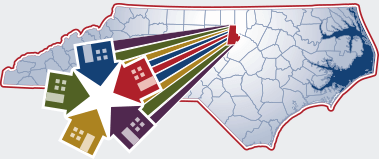DHA History 2000-2009
At the turn of the 21st Century, urban development policy was changing. In 1992, the Bush Administration's HUD department created the HOPE VI program. The acronym stood for "Housing Opportunities for People Everywhere." No longer would HUD public housing developments be oriented to standalone communities for low income families. Now, they would feature mixed income families (as well as both rental units and those for sale) and would seek to generate economic development surroundings the new homes, to act as an engine of opportunity for those who live and work in the target neighborhoods.
HOPE VI also deployed the concept of "defensible space" for residents, making sure they had front porches and at least a small patch of land to maintain for a lawn or garden for the resident/owner to maintain. Decentralizing low-income communities was the rule, not the exception in HUD-funded development, understanding the injuries of social and economic isolation.
In 2000, DHA, working with The Community Builders, Inc. (TCB), applied for HOPE VI funding and was awarded a HOPE VI Revitalization Grant in the amount of $35 million. The grant covered the redevelopment of the area surrounding Few Gardens (now Franklin Village).
The first decade of the new century saw controversy and upheaval at DHA including the changeover in top leadership and the sale of long-neglected Fayette Place property (which was subsequently re-acquired by DHA). Administrative problems prevented many development ambitions from coming to fruition. The Golden Belt property was sold to Andy Rothchild of Scientific Properties. Toward the end of the decade, the economic downturn that impacted all real estate development halted any plan for building new communities.


